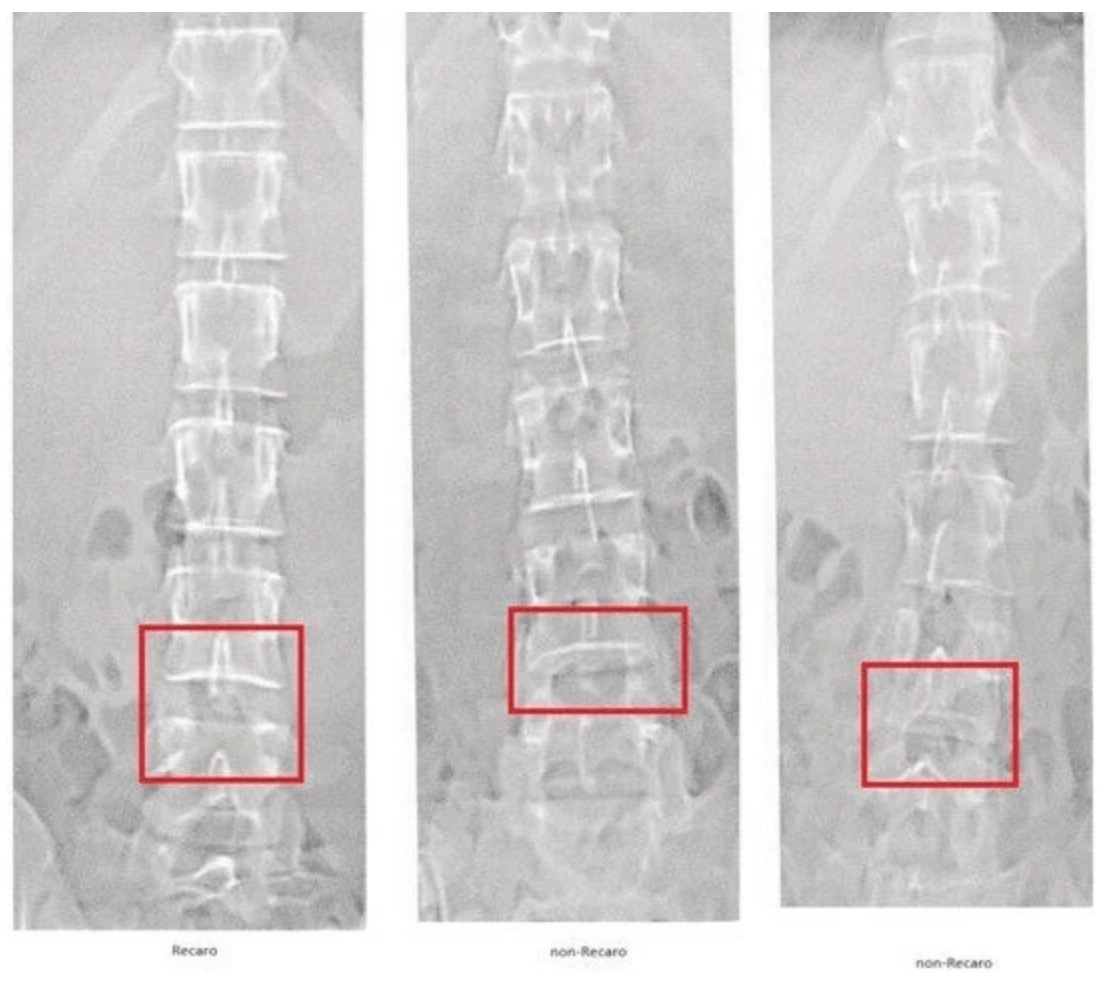Motorsports is one of the few sports where women compete directly alongside men. However, the field has been significantly underrepresented in sports medicine research. While soccer boasts 400 scientific publications annually, the study of automobile racing has seen fewer than 40 since 1960. This gap in research has left a void in our understanding of optimal driver preparation, injury recovery, and safety enhancements. Yet, the last decade has witnessed a promising increase in motorsports sports medicine research, including studies focusing on female drivers.
THE PROJECT
The Michigan State University | RECARO: Female Driver Project seeks to address critical questions about female driver physiology and the effects of race seat design on performance and safety. One persistent issue is the potential for sub optimal seat fitment to cause spinal disk compression, impaired blood flow, and general discomfort among female drivers. This pilot study aimed to evaluate the physiological strain experienced by female drivers using the RECARO Pro Racer SPA XL seat.
Laboratory Assessment: Five female drivers participated in the laboratory phase at Michigan State University. Their spinal columns were scanned using Dual Energy X-Ray Absorptiometry (DXA) to measure the distance between lumbar vertebrae. The participants were categorized based on whether they used a RECARO or non-RECARO seat. The hypothesis was that the RECARO seat, designed for female racers, would result in less spinal movement and reduced disk compression, potentially preventing long-term back injuries.
Following the DXA scan, the drivers were tested on a race simulator equipped with a RECARO seat. This simulator, an AP-Xtreme Wide Triple Monitor setup mounted on a gyroscope, provided realistic racing feedback. Drivers underwent an hour-long simulation while heart rate and oxygen consumption were measured. These metrics were compared against previous tests conducted with non-Recaro seats.
Racetrack Assessment: The research team also collected data from two female drivers on actual racetracks—one using a RECARO seat at the Circuit of the Americas in Austin, TX, and the other using a non-RECARO seat at Road Atlanta in Braselton, GA. Each driver drove for 120 minutes, with physiological data being collected to compare the effects of the different seats.
KEY FINDINGS
Lumbar Vertebrae: Preliminary data suggested that non-RECARO seats might contribute to a reduced gap between lumbar vertebrae, indicating potential spinal compression during impacts. Although the sample size was small, these findings align with anecdotal evidence from female racers.
Simulator Data: In the simulator, drivers burned fewer calories per minute using the RECARO seat (2.86 kcal/min) compared to the non-RECARO seat (3.27 kcal/min). Over a 60-minute session, this difference translated to 24.6 fewer calories burned with the RECARO seat. Extrapolating to a two-hour race, this suggests a significant reduction in energy expenditure, potentially decreasing driver fatigue and improving performance.
Racetrack Data: Initial racetrack data indicated lower heart rates and body temperatures for the driver using the RECARO seat. However, this driver also experienced multiple caution laps, which reduced workload and may have influenced the results.
The pilot study's findings are promising, suggesting that the RECARO seat can reduce the physical strain on female drivers and potentially prevent injuries. Despite the small sample size and confounding factors in the racetrack data, this research lays the groundwork for larger studies. Future research could involve surveying all female drivers using RECARO and non-RECARO seats to identify injury prevalence and recruiting more participants for comprehensive on-track data collection.
This Project is an important step towards enhancing the health, safety, and performance of female race car drivers, ultimately contributing to more inclusive and informed motorsport practices.
Related Articles
 Father of the GT-R, Kazutoshi Mizuno, Announces Limited Book
Father of the GT-R, Kazutoshi Mizuno, Announces Limited Book
 ST Suspension Celebrates 45 Years
ST Suspension Celebrates 45 Years
 Unitronic Labor Day Sale
Unitronic Labor Day Sale
 OMG Miata: Dione Mascunana's 1994 Mazda Miata
OMG Miata: Dione Mascunana's 1994 Mazda Miata
 Proper Execution: Max Caroca’s 2007 BMW 335i
Proper Execution: Max Caroca’s 2007 BMW 335i
 Make-A-Wish for MORE HORSEPOWER Lingenfelter Eliminator Spec Engine Raffle Benefiting Make-A-Wish Foundation
Make-A-Wish for MORE HORSEPOWER Lingenfelter Eliminator Spec Engine Raffle Benefiting Make-A-Wish Foundation






